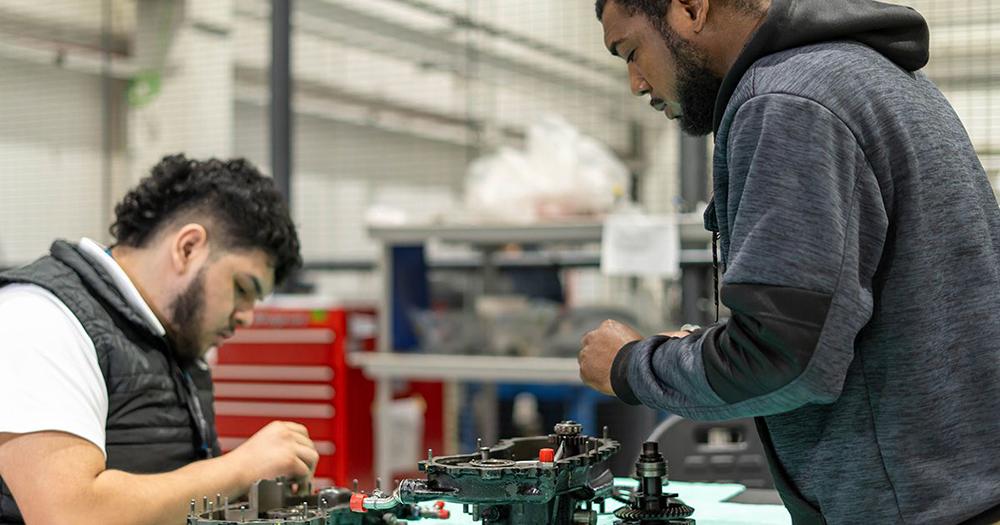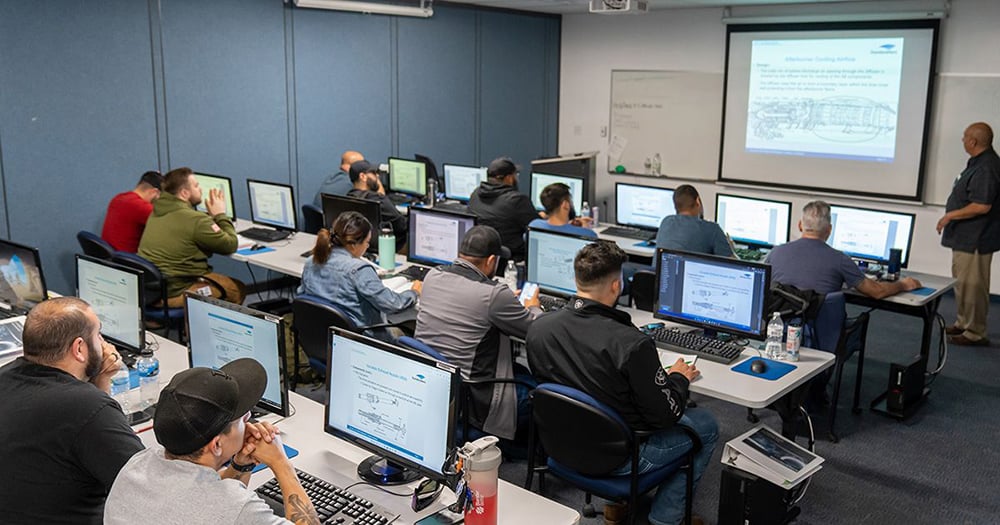
StandardAero is ramping up workforce training and hiring efforts in San Antonio as it prepares to introduce CFM International Leap engine services in 2024.
The independent MRO provider launched an in-house aviation mechanic training program at its San Antonio site in June, which has since graduated 55 new mechanics, including its most recent graduation ceremony on Dec. 11. The 12-week program, which is capable of training groups of up to 25 employees in each cohort, can support up to 200 new mechanics annually. StandardAero is planning to grow its workforce in San Antonio from around 600 employees to more than 1,000 in the next couple of years.
According to Greg Chapman, StandardAero’s director of training and workforce development, the Leap engine introduction has been a major driving force behind the company’s decision to launch the in-house training program. Previously, newly hired mechanics at StandardAero went through two weeks of onboarding and training in areas such as regulatory policies and internal computer systems before being paired with on-the-job trainers for “months on end,” he says. “With the new Leap engine coming in we’re bringing in so many new people so quickly that it just can’t work anymore. It’ll overwhelm the production lines and the on-the-job trainers.”
In response, Chapman says StandardAero pursued a “grow our own” strategy to develop its in-house training program. “The investment included hiring 12 dedicated instructors and providing dedicated space, resources and a customized curriculum for our new hires to hit the ground running—whether they have any aviation or mechanical experience, or not,” he says.
The program has so far trained employees with a mix of experience, including new hires with some level of previous civil or military aerospace experience as well as those with previous mechanical experience in adjacent technical industries, such as automotive and oil and gas. The program is also training employees with no mechanical experience since, as Chapman notes, “there just aren’t that many trained and qualified mechanics out there right now for us to be able to hire in as fast as we need them.”

To accommodate different skill levels and accelerate time to shop floor for more experienced trainees, the program is structured in a modular way. Chapman says all trainees take the same introductory classes for the first two weeks of the program before being tested on common skills, such as how to read blueprints or use certain types of tools and precision measuring equipment. More experienced trainees are accelerated into a practical application section of training in which they demonstrate proficiency working on StandardAero’s training engines and modules. Chapman says the accelerated version of the class for more experienced trainees takes approximately four weeks instead of 12 weeks.
Although the Leap introduction is driving StandardAero’s in-house training efforts, Chapman notes that not all new hires are being brought on to staff its Leap lines. “We just got the tooling and the first Leap training engine into the facility that we’re working on now, so we are just now training all of our new Leap mechanics,” he says. “The [new hires] who are graduating the program are building proficiency across the rest of our production lines, and as we start pulling some customer engines into the facility and building proficiency with the core group of mechanics on that, we’ll bring these other new mechanics back over after they’ve built some proficiency and they’ll start training on the Leap engine themselves.”
As the training program develops and expands, StandardAero is also looking at options to build training capability across its other sites. It is planning to train more than 150 technicians next year.
“As we reach the peak of our buildout of personnel in San Antonio and we start to have additional capacity, what we’re looking at is the ability to bring other mechanics in from other sites throughout North America,” says Chapman. He notes that StandardAero is looking at a “hub and spoke” concept in which trainers and mobile training teams could be sent to work at other sites to help build out similar programs.
StandardAero is also focused on improving workforce diversity through the program. A spokesperson for the company says approximately 75% of graduates so far have come from diverse backgrounds and 25% of graduates have been women.
“Our goals for our graduating students are quite high,” says Russell Ford, StandardAero chairman and CEO. “We want to bring in the most diverse candidates, train them quickly, retain 100% of our graduates and create a lifelong career path that provides them with meaningful work and rewarding pay and benefits.”





